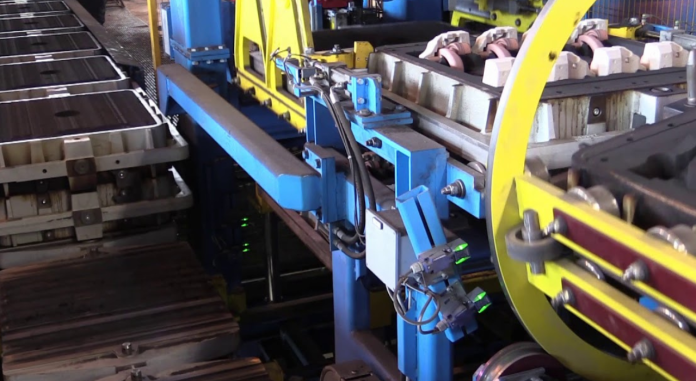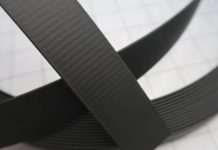Green sand molding may be a broadly utilized preparation in foundries for creating metal castings. It includes making molds utilizing green sand, a blend of sand, clay, water, and in some cases other added substances. The term “green” alludes to the reality that the sand form isn’t heated or cured but remains soggy when the liquid metal is poured into it. This strategy is favored due to its cost-effectiveness, ease of utilization, and capacity to create complex shapes with great dimensional precision. The green sand mixture’s dampness and clay substance offer assistance in holding its shape amid metal pouring, making it a perfect choice for an assortment of casting applications.
Understanding the Green Sand Molding Machine: A Comprehensive Direct
A green sand molding machine mechanizes this handle, upgrading effectiveness, consistency, and efficiency. This article clarifies how a green sand molding machine works, breaking down its operation into a few stages.
Components of a Green Sand Molding Machine
Green sand molding may be a handle that includes the utilization of a form box, a sand container, a sand slinger, and a design plate. The shaped box holds the sand mixture, whereas the slinger disseminates it. The design plate shapes the form depression concurring with the required casting shape. The shock and crush component compacts the sand around the design, guaranteeing ideal thickness and shape maintenance. The stripping instrument isolates the form from the design, guaranteeing smooth casting. These components contribute to the viability and unwavering quality of green sand molding in foundry operations.
Planning the Sand Blend
The green sand molding handle includes a sand blend that’s significant for making strong and exact molds. Silica sand is the most important component, giving bulk and warm resistance. Bentonite clay acts as a folio, guaranteeing the sand holds its shape. Water actuates the clay, improving form quality. Added substances like coal tidy or polymers can alter properties. The sand blend is ready in a blender to attain uniform consistency and dampness substance, guaranteeing shape judgment and dimensional exactness. Legitimate blending and composition are fundamental for creating high-quality castings in foundry operations.
Design Arrangement
The design plate could be a significant portion of green sand molding, reproducing craved casting shapes, measurements, and surface points of interest. It can be made from wood, metal, or plastic, depending on plan complexity and generation volume. Wooden designs are reasonable for less complex shapes and lower-generation runs, whereas metal designs offer solidness and exactness. Plastic designs are favored for flexibility. This fastidious approach guarantees high-quality metal castings in mechanical foundry operations.
Filling the Molding Box
The green sand molding handle includes a shape box or jar encasing the design plate and containing the sand blend. The sand container stores and apportions an exact sum of green sand into the carafe, keeping up consistency within the mold’s composition and thickness. The sand slinger, a high-speed turning gadget, impels the sand into the jar with exactness, filling all cavities and complex subtle elements of the design. This handle minimizes voids or abandons, guaranteeing the mold’s integrity and final quality. This guarantees that molds reliably replicate the pattern’s perplexing highlights and assembly mechanical foundry determinations.
Compaction Prepare
The green sand molding preparation includes two primary activities to get ready a form for metal casting. The primary is jarring, which makes vibrations and uniform thickness around the design, disposing of the discussed pockets. The moment activity is crushing, which increments the sand’s thickness and fortifies the mold’s shape. This high-density form is pivotal for withstanding warm and mechanical stresses amid metal pouring, ensuring precise design replication within the last casting. Both activities optimize form quality and astuteness, contributing to its proficiency and unwavering quality in foundries.
Form Stripping
The green sand mold is compacted and isolated from the design employing a stripping instrument. This preparation guarantees the shape remains intaglio. The design withdrawal arrangement extricates the design from the shape, clearing out a depression that mirrors the intended casting measurements. The stripping mechanism’s accuracy and controlled development protect the mold’s judgment, guaranteeing smooth casting without harming it. This arrangement marks the ultimate organizing of shape arrangement sometime recently metal pouring, guaranteeing a wrapped-up casting assembly quality standards.
Shape together and Wrap up
The green sand molding preparation includes a shape box or jar as the establishment, typifying the design plate and containing the sand mixture. The sand container stores and discharges an exact sum of green sand, keeping up consistency within the mold’s composition and thickness. The sand slinger, a high-speed pivoting gadget, impels the sand into the carafe with exactness, filling all cavities and perplexing points of interest in the design. This exact conveyance minimizes voids or abandons, guaranteeing form judgment and last quality, assembly mechanical foundry details for accuracy and unwavering quality.
Conclusion
Green sand molding machines robotize the conventional sand casting handle, giving consistency and efficiency in creating metal castings. By understanding each arrangement of the machineâ’s operationâfrom planning the sand blend to compacting and stripping the moldâfoundries can optimize their generation forms and accomplish high-quality castings. The exactness and mechanization advertised by these machines are fundamental for the assembly of the requests of present-day fabricating businesses.














